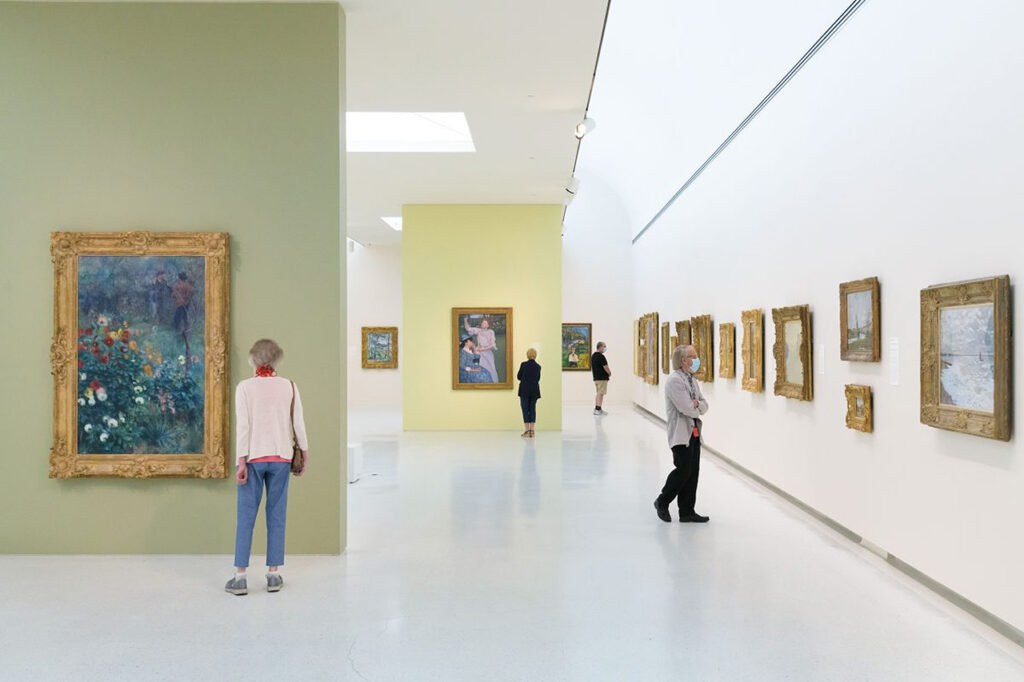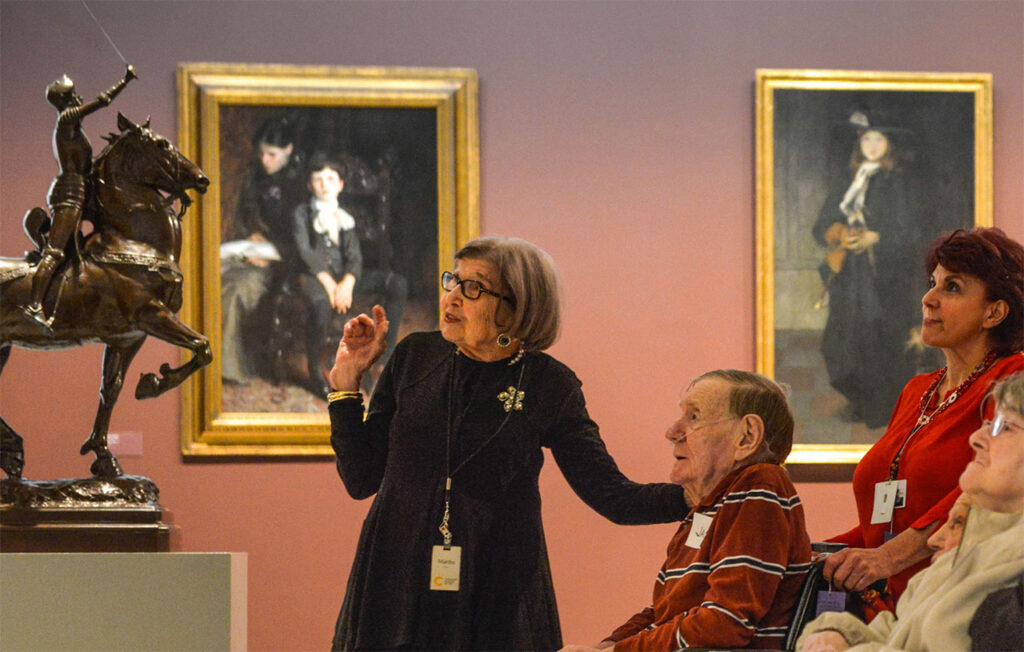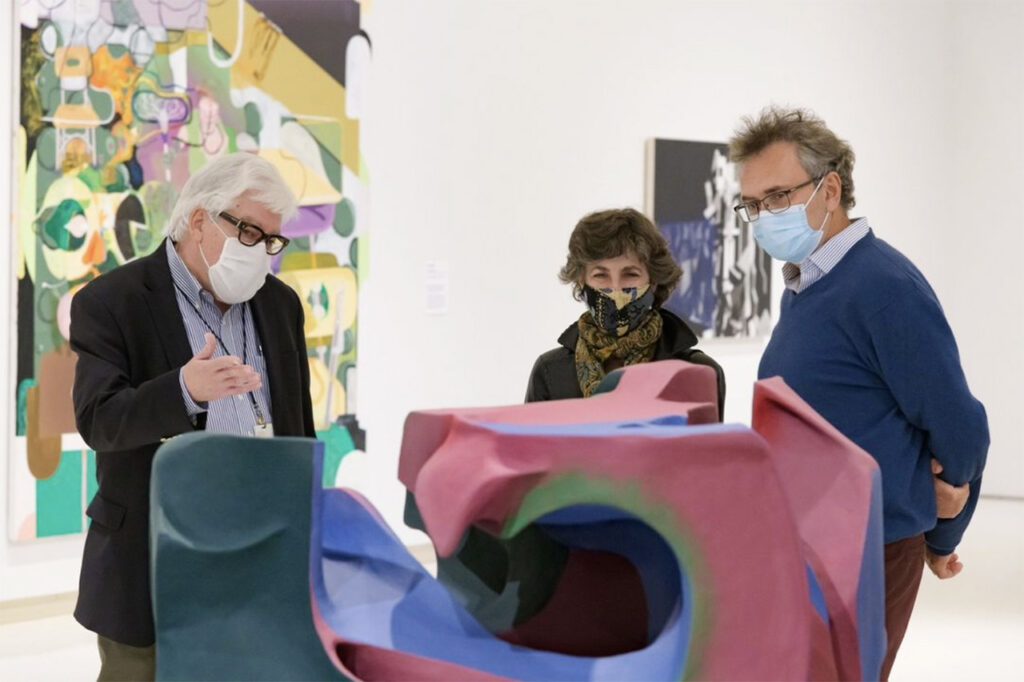Last year, the American Alliance of Museums’ Museums and Creative Aging report surfaced the fact that seniors remain a demographic that’s been ill-served by cultural institutions. “Museums have not been this attentive to the needs of older adults,” the paper read — this, despite seniors representing a key segment of the cultural audience, when not forming the backbone of most communities. It’s an unhappy finding, but as Lucy Stewart, the Associate Curator of Education at Carnegie Museum of Art, saw it, “It was a call to action.”
In April, Stewart led the launch of Mindful Museum at the Pittsburgh institution, a subscription series featuring a suite of online and in-person programs designed for audiences aged over 55. Included here are Art Paths, tours of the museum’s gallery optimized for movement and meditation; art history and drawing classes tapping into art therapy; and in-person chair yoga instruction, previously offered virtually.

Launched in April, the Mindful Museum suite of programs includes tours and classes designed for audiences aged over 55. Image: Carnegie Museum of Art
Mindful Museum has a precedent: Carnegie Museum of Art’s In The Moment tours for individuals living with dementia and Alzheimer’s, which has been running since 2008. Assuming responsibility for the program in 2017, Stewart expanded its scope, while gaining a deeper understanding of the senior community. “I witnessed a great need for seniors to be able to express themselves and to be as active as possible but in a safe, comfortable, and stimulating environment,” she tells Jing Culture & Commerce. “So, for Mindful Museum, I have created a situation, informed by practice, where I trust those needs are answered.”
So far, Stewart reports positive responses from Mindful Museum participants who appreciate the use of chairs in the galleries, allowing them to sit and enjoy art in comfort, and who value a planned space and slot that doesn’t rush them through the museum. A single man in his 70s “comes in smiling and leaves smiling more so,” she says, and another, who recently lost his wife, “visits for himself and for her memory.”

Since 2008, the museum has been hosting its In The Moment tours, facilitating art appreciation and art therapy for individuals living with dementia and Alzheimer’s. Image: Carnegie Museum of Art
As the aging population grows and as lockdowns have intensified the isolation already felt by older adults, Mindful Museum arrives as almost a salve, underscoring the role of the cultural institution as a space for well-being and healing. In doing so, it further meets the sector’s ongoing calls for inclusivity, accessibility, and mindfulness. Here’s more from Stewart on how the program was built.
Why is the demographic of visitors over 55 important to Carnegie Museum of Art?
There are two main reasons. Seniors are important to the social fabric of all communities. They bring vital knowledge and life experience to the table. They want to share and learn. Plus, COVID has only heightened the devastating effects of isolation and loneliness. Museums in general are places for community and dialogue, and are uniquely positioned to foster connections among people using art immersion as a stimulating factor.
What are some key objectives of Mindful Museum?
There are three main objectives: [to] support creative aging in the Pittsburgh region utilizing art immersion; promote socialization, well-being, mental and physical stimulation, and a sense of feeling valued among publics aged 55+ regardless of physical or cognitive limitations; [and] learn from Mindful Museum seniors about the needs, wants, and challenges to museum visitation and therefore remove barriers to extended learning in a museum setting.

“Museums in general are places for community and dialogue,” says Lucy Stewart, “and are uniquely positioned to foster connections among people using art immersion as a stimulating factor.” Image: Carnegie Museum of Art
Could you outline the audience research done as part of the program’s planning or design processes?
The research about the positive impact of the arts on aging publics has increased substantially over the last 10 years. Understanding the demographics of the Pittsburgh region was also important. There are more than 20,000 people aged 55+ within walking distance of Carnegie Museum of Art. Nationally, by the year 2035, for the first time in our history, there will be more people over the age of 65 than those 17 and under. Museums across the country are doing great work; however, I have not seen the creation of a long-term subscription series that offers choice and collectively supports the social, physical, and cognitive needs of aging publics.
What considerations went into whether Mindful Museum offerings should be online or onsite?
There was no doubt in my mind that there had to be both opportunities, and I understand the benefits and challenges of both options. Onsite promotes social interaction and online provides choice when onsite isn’t possible. We have a few members who live far away and only take part in the online options. Seniors are always interested in learning and are becoming more and more tech-savvy, so Zoom and recordings are welcome. Mindful Museum is meant to be about choice. You drop in and out as you like, and it is already working in that way.
For other cultural organizations planning similar programs for the senior community, what are some key first steps you’d recommend?
Start small and build up. If you already have an active senior audience, talk with them. Learn about the senior population in your city. Be aware of any barriers within your facility. Consider a one-time registration but sustained drop-in opportunities — offer choices. Offer opportunities for sharing and conversation. Consider both onsite and online. Look for program leaders with some expertise working with seniors. Build empathy among staff by offering training that focuses on dementia care — the Alzheimer’s Association offers terrific training.



